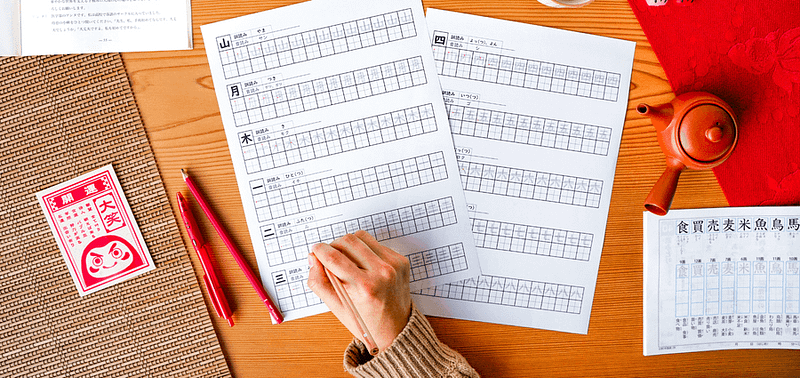Each language has its own way of counting things and in Japanese, there are literally hundreds of different counters. A counter is a word that describes a thing that you are counting, for example people, time, animals, and so on.
As a beginner Japanese language student, it might seem incredibly overwhelming to learn that there are so many counters, each with their own specific application. But, you’ll be glad to know that you can easily get by in day-to-day life without knowing all of them.
Read on to learn more about the counting system in Japanese and basic Japanese counters.
Basic numbers and counting
Basic numbers and counting in Japanese is fairly straightforward. Take a look at our chart with Japanese numbers 1 to 10, with both native Japanese, or wago 和語, and Sino-Japanese, or kango 漢語, readings.
| Number |
Kanji |
Sino-Japanese |
Native Japanese |
| 1 |
一 |
Ichi いち |
Hitotsu ひとつ |
| 2 |
二 |
Ni に |
Futatsu ふたつ |
| 3 |
三 |
San さん |
Mittsu みっつ |
| 4 |
四 |
Shi し、Yon よん |
Yottsuよっつ |
| 5 |
五 |
Go ご |
Itsutsu いつつ |
| 6 |
六 |
Roku ろく |
Muttsu むっつ |
| 7 |
七 |
Shichi しち、Nana なな |
Nanatsu ななつ |
| 8 |
八 |
Hachi はち |
Yattsu やっつ |
| 9 |
九 |
Ku く、Kyū きゅう |
Kokonotsu ここのつ |
| 10 |
十 |
Jū じゅう |
Tō とう |
There are a couple of points to note:
- You only use the native Japanese readings for numbers up to 10 and they do not require a counter word. Therefore, this makes them universal counters which you can use to count most things, except for people, money and time.
- The Sino-Japanese reading of numbers always requires a counter and since it is used for reading numbers beyond 10, the Sino-Japanese reading is used more often.
Counting larger numbers
Of course, you can count much larger numbers in Japanese as well. Here are some of our tips!
Counting up to 100 is very simple once you understand how to compound the numbers: count the 10s and then add the next number. For example:
“11” is one 10 plus 1, so it becomes “jū-ichi”
“25” is two 10s plus 5, so it’s “nijū-go”
“35” is three 10s plus 5, so it’s “sanjū-go” and so on.
As you continue going up, you keep following this pattern except for numbers like 100 (百, hyaku), 1000 (千, せん) and 10,000 (一万, ichiman), which all have their own words.
For example, the number 5750 is made up of five 1000s plus seven 100s plus five 10s, which makes it “go-sen-nana-hyaku-go-jū”
Important to note is that for numbers 10 to 1000, you don’t say “ichi” if the number begins with 1. For example, 1500 is not “ichi-sen-go-hyaku”. It’s simply “sen-go-hyaku”. Similarly, 150 is pronounced “hyaku-go-jū” and not “ichi-hyaku-go-jū”.
For the even larger numbers like 100,000 and 1,000,000, you need to think of it in terms of how many 万, or “man”, there are. For example, if 10,000 is one 万, then 100,000 is ten 万. This means you say 100,000 as “jū-man”.
One million is 100 万, so in Japanese “one million” becomes “hyaku-man”.

Basic Japanese counters
While you can get by just fine using the universal counters, knowing how to use other counters is an important part of learning Japanese. If you have been studying the language, you probably will have learnt some of these already without even realising it.
Ko (個, こ)
After the universal counters, 個 is probably the next most useful basic Japanese counter word. It is generally used to count small objects, such as pieces of fruit e.g.
I ate one Mikan orange
みかんを一個食べました。
Mikan o i-ko tabemashita.
Note: most times you shorten “ichi” to “i” when it comes before a counter, so it’s “i-ko” not “ichi ko” here.
Things like clouds, empty containers, typhoons, planets and bacteria are also counted using 個.
Nin (人, にん)
This is the counter for people, except if there is just one person, or if there are two people. For one person, you say hitori (一人, ひとり) and for two, you say futari (二人, ふたり).
For other numbers, you just say the number plus the counter e.g.
Three people
三人 (さんにん)
Sannin
Four people
四人 (よにん)
Yonin
Note that usually 四 is pronounced “yon”, but here you don’t pronounced the “n” sound. You also never say “shinin”.
Hiki (匹, ひき)
This is the counter you use for small to medium size animals such as cats, dogs, fish, insects, but also monsters and made-up creatures. For larger animals, you use the counter tō (頭, とう).
I have one cat, two dogs and three rabbits
猫を1匹, 犬を2匹とうさぎを3匹飼っています。
Neko o ippiki, inu o ni-hiki to usagi san-biki katte imasu.
Note the pronunciation changes that occur here, where “hiki” becomes “piki” or “biki” depending on the number in front of it. Other numbers where the pronunciation changes are:
6 = roppiki, ろっぴき
8 = happiki, はっぴき
10 = juppiki, じゅっぴき
100 = hyappiki, ひゃっぴき
1000 = senbiki, せんびき
10,000 = ichimanbiki, いちまんびき
This can be extremely confusing for beginners, especially because there are other words that do this as well. But trust us, it does get easier the more you practise and it will become more natural the longer you learn Japanese, especially if you spend time living in Japan.
En (円, えん)
This is the counter for money e.g.
100 yen
100円 (百円) , ひゃく えん
Hyaku-en
1000 yen
1000円 (千円), せんえん
Sen-en
10,000 yen
10,000円 (一万円), いちまんえん
Ichiman-en
Ji (時), Fun/Pun (分), Nen (年), etc
These are counters for units of time. These include:
Second = byō 秒, びょう
Minute = fun/pun 分, ふん/ぷん
Hour = ji 時, じ
Day = nichi/ka 日, にち/か
Week = shūkan 週間, しゅうかん
Month = getsu 月, げつ
Year = nen 年, ねん
A note about 日: you can use this to count the actual number of days and you can also use this to talk about the calendar days. But, you say “nichi” for when you’re counting days and “ka” for the calendar days. For example:
Two days, the second day of the month
二日 (ふつか)
Futsuka
Note that when you get to days beyond ten, you use “nichi” e.g.
The 15th day of the month
十五日 (じゅうごにち)
Jūgo-nichi
You also need to remember that the first and 20th days of the month have their own unique pronunciations:
First day of the month
一日 (ついたち)
Tsuitachi
The 20th day of the month
二十日 (はつか)
Hatsuka
Be careful also of the reading for the 8th day of the month, which is yōka, ようか, even though the native Japanese reading of 8 is “yattsu”.
Again, don’t worry if this is all a bit confusing. It will become easier the more you learn Japanese. Just take the time to practise it!
Hon (本, ほん)
This is the counter for long objects, such as pens, bottles and chopsticks. It’s also the counter for train tracks, rivers and umbrellas.
Note that even though the word 本 means “book” in Japanese, this is not the counter you use to count books (more on that later).
You simply say the number of the object plus “hon”, except if the number ends in 3, 1, 6, 8 or 10. The number 3 is followed by “bon”, while 1, 6, 8 and 10 are followed by “pon”.
Satsu (冊, さつ)
This is the counter for all things book-related: books, notepads, magazines, booklets, dictionaries and so on.
I bought two Murakami novels yesterday.
昨日村上の小説を二冊買いました。
Kino, Murakami no shousetsu wo ni satsu kaimashita.
Mai (枚, まい)
Use this counter for flat, thin objects like pieces of paper and tickets. It can also be used to count clothing like pants and shirts, as well as walls and single servings of soba.
For example:
(Buying tickets at a booth) Two tickets, please
二枚お願いします。
Ni mai onegaishimasu
Kai (回, かい)
This is used to count the frequency that something happens. In English, this would translate to “times” e.g.
I have been to Japan three times
日本に三回行ったことがあります。
Nihon ni san kai itta koto ga arimasu.
You can also use it to count rotations/revolutions.
Note that 階, which is a counter for floors of a building, is also read as kai. Pay attention to the kanji and context to understand which word is being used.
Soku (足, そく)
The kanji for this counter means “foot” or “leg”, so we use this as a counter for pairs of shoes, slippers, socks, ice skates etc.
I have six pairs of socks
靴下が六足あります。
Kutsushita ga roku soku arimasu.
When using it with 3, you pronounce it as “zoku” not “soku” e.g.
I have three pairs of shoes
靴が三足あります。
Kutsu ga san zoku arimasu.
When you use it with 8 or 10, it becomes “ha-ssoku” and “ju-ssoku” and not “hachi soku” or “jū soku”.
Unique counters
Of the hundreds of counters in Japanese, there are plenty that are less common in daily use, but are still very interesting to learn about.
Hira (片, ひら) – used to count small flat things that flutter such as petals and snowflakes.
Ho (舗, ほ) – mostly used for counting maps.
Rin (鱗, りん) – used to count fish scales. Also used to count fish if you’re feeling fancy.
Ki (騎, き) – counter for warriors on horseback.
Tō (盗, とう) – used for counting steals of bases in baseball. The counter for bases in baseball is rui (塁, るい).
Bi (尾, び) – counter for fish and crustaceans with fins or tails. Usually used by fishermen and staff at pet stores to talk about how many fish they have for sale. Not usually used by customers buying fish.
Mori (盛/盛り, もり) – used to count piles, usually of food such as a bowl of oranges, baskets of fruit, etc.
Rō (浪, ろう) – counter for the number of years someone has been studying to pass university entrance exams after they have already failed once.
Shizuku (雫, しずく) – counter for drips or drops, such as tear drops. Often used in song lyrics.
And that’s some basic insight into the world of Japanese counters! If you would like to learn more about the Japanese language, why not sign up to one of our online language courses?
Or if you’re interested in studying in Japan in person, we are currently taking applications for 2021 study terms. Contact us today!













